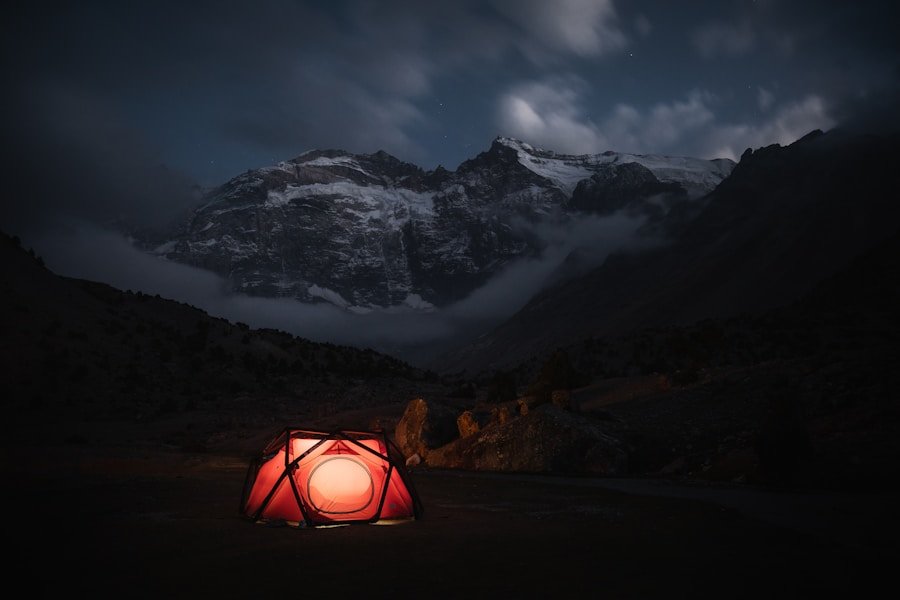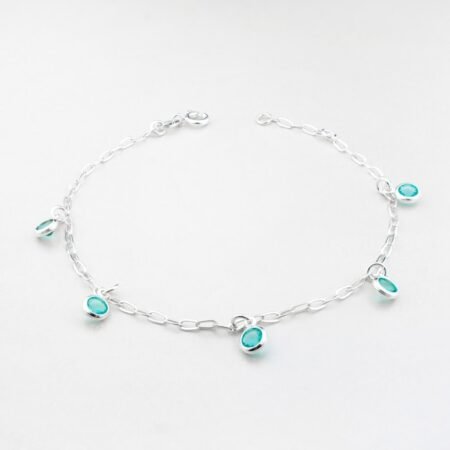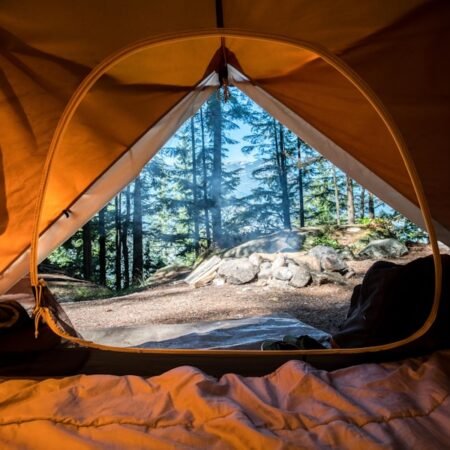Camping hammocks have become increasingly popular among outdoor enthusiasts in recent years. These lightweight, portable sleeping solutions offer a comfortable and convenient alternative to traditional tents. A camping hammock is essentially a suspended bed made of durable, weather-resistant fabric that can be easily set up between two trees or other sturdy anchor points.
This allows campers to sleep off the ground, away from insects, rocks, and uneven terrain. Hammocks are also a great option for backpackers and hikers looking to minimize the weight and bulk of their gear. With the right hammock, campers can enjoy a restful night’s sleep while taking in the beauty of the great outdoors.
Camping hammocks are designed to be compact and lightweight, making them an ideal choice for anyone looking to travel light. They are typically made of nylon or polyester, which are both durable and quick-drying materials. Many hammocks also come with built-in bug nets and rain flies, providing protection from insects and the elements.
Some hammocks even have built-in insulation for cooler temperatures, making them suitable for year-round use. With the right accessories, such as tree straps and carabiners, setting up a camping hammock can be quick and easy, allowing campers to spend more time enjoying their surroundings and less time fussing with gear.
Key Takeaways
- Camping hammocks are lightweight, portable sleeping options for outdoor enthusiasts.
- They offer a comfortable and elevated sleeping experience, away from damp ground and pesky insects.
- Using a camping hammock can provide better sleep quality and reduce back pain compared to traditional camping setups.
- There are various types of camping hammocks, including single and double hammocks, with different materials and features.
- When choosing a camping hammock, consider factors such as weight capacity, insulation, and ease of setup.
Benefits of Using a Camping Hammock
There are numerous benefits to using a camping hammock over a traditional tent. One of the main advantages is the comfort factor. Sleeping in a hammock can alleviate pressure points and provide a more restful night’s sleep compared to sleeping on the ground.
Additionally, hammocks can be set up in areas where tents cannot, such as steep or rocky terrain, making them a versatile option for camping in various environments. Hammocks also offer better ventilation than tents, which can be especially beneficial in hot and humid conditions. Furthermore, hammocks are less likely to sustain damage from sharp objects or rough terrain, as they are suspended off the ground.
Another benefit of using a camping hammock is the minimal impact it has on the environment. Unlike tents, which require clearing and flattening the ground, hammocks leave little to no trace on the landscape. This makes them an eco-friendly choice for outdoor enthusiasts who want to minimize their impact on natural areas.
Additionally, camping hammocks are often more affordable than high-quality tents, making them an attractive option for budget-conscious campers. With their lightweight and compact design, hammocks are also easier to transport and store than traditional tents, making them a practical choice for backpackers and travelers. Overall, the benefits of using a camping hammock make it a compelling option for anyone looking to enhance their outdoor experience.
Types of Camping Hammocks
There are several different types of camping hammocks available on the market, each with its own unique features and benefits. The most basic type of camping hammock is the single hammock, which is designed for one person and is typically the lightest and most compact option. Double hammocks are designed to accommodate two people and are slightly larger and heavier than single hammocks.
Some double hammocks even come with a removable center divider, allowing them to be used as two separate single hammocks if desired. Another type of camping hammock is the jungle hammock, which is designed with an integrated bug net and rain fly for protection against insects and the elements. These hammocks are ideal for camping in areas with high bug activity or unpredictable weather conditions.
Bridge hammocks are another type of camping hammock that features a flat sleeping surface and spreader bars at each end, providing a flatter and more stable sleeping experience compared to traditional gathered-end hammocks. Finally, there are also modular hammock systems that allow campers to customize their setup with various accessories such as underquilts, top quilts, and tarps for added insulation and weather protection. These systems are popular among experienced hammock campers who want to tailor their gear to specific environmental conditions.
With so many options available, campers can choose a camping hammock that best suits their needs and preferences.
How to Choose the Right Camping Hammock
| Feature | Description |
|---|---|
| Material | Usually made of lightweight, breathable nylon or polyester |
| Weight Capacity | Typically can support between 250-500 pounds |
| Portability | Compact and easy to pack, ideal for backpacking and hiking |
| Setup | Can be quickly and easily hung between trees or other sturdy anchors |
| Comfort | Provides a comfortable and ergonomic sleeping or lounging position |
When choosing a camping hammock, there are several factors to consider to ensure you select the right option for your needs. The first consideration is size and weight capacity. It’s important to choose a hammock that can comfortably accommodate your body size and weight, as well as any additional gear you may want to bring into the hammock with you.
Additionally, consider the length of the hammock and whether it will fit comfortably between your chosen anchor points. Another important factor to consider is the type of suspension system included with the hammock. Many camping hammocks come with tree straps and carabiners for easy setup, while others may require purchasing these accessories separately.
It’s also important to consider the material and construction of the hammock, as well as any additional features such as bug nets, rain flies, or insulation. It’s also important to consider the climate and terrain where you will be using the hammock. For example, if you plan to camp in colder temperatures, you may want to choose a hammock with built-in insulation or invest in additional accessories such as underquilts and top quilts for added warmth.
Similarly, if you plan to camp in areas with high bug activity or frequent rain, a jungle hammock with integrated bug netting and rain protection may be the best option for you.
Setting Up and Using a Camping Hammock
Setting up a camping hammock is relatively straightforward, but it’s important to follow proper techniques to ensure a safe and comfortable experience. The first step is to find two sturdy anchor points, such as trees or posts, that are spaced an appropriate distance apart for your hammock. Once you have identified your anchor points, attach your suspension system (tree straps or webbing) around each anchor point at a height that allows your hammock to hang at a comfortable height off the ground.
Next, attach your hammock to the suspension system using carabiners or other attachment hardware. Make sure your hammock is hung tautly between the anchor points without sagging too much in the middle. Once your hammock is securely hung, test it by sitting or lying in it to ensure it feels stable and comfortable.
When using a camping hammock, it’s important to consider proper sleeping position and posture for a restful night’s sleep. Most people find it most comfortable to lie diagonally in a camping hammock rather than straight along its length. This allows for a flatter sleeping surface and better support for your body.
Additionally, using a sleeping pad or underquilt can provide added insulation and comfort when sleeping in cooler temperatures.
Tips for Camping Comfortably with a Hammock
There are several tips and tricks that can help campers maximize their comfort when using a camping hammock. One important consideration is finding the right angle and tension when hanging your hammock. A 30-degree angle is generally recommended for achieving a comfortable sleeping position without putting too much stress on the suspension system or anchor points.
Another tip for camping comfortably with a hammock is to invest in additional accessories such as underquilts, top quilts, and sleeping pads for added insulation and comfort. These accessories can help regulate body temperature and provide cushioning against the pressure of lying in a hammock for extended periods. It’s also important to consider your surroundings when setting up your camping hammock.
Look for anchor points that are sturdy and at an appropriate distance apart for your hammock. Avoid setting up your hammock near dead or unstable trees or in areas with potential hazards such as falling branches or rockslides. Finally, consider your personal comfort preferences when using a camping hammock.
Some people find it helpful to bring along additional items such as pillows or small blankets to enhance their sleeping experience. Additionally, practicing setting up and using your hammock in advance of your trip can help you feel more confident and comfortable when using it in the great outdoors.
Safety Considerations for Camping Hammocks
While camping hammocks can offer a comfortable and enjoyable outdoor sleeping experience, it’s important to consider safety when using them in natural environments. One important safety consideration is choosing appropriate anchor points for your hammock. Look for healthy, sturdy trees or other anchor points that are at least 6 inches in diameter and free from signs of rot or damage.
It’s also important to inspect your suspension system and hardware regularly for signs of wear or damage. Make sure all straps, webbing, carabiners, and other attachment hardware are in good condition before each use. Additionally, be mindful of weight limits for your specific hammock model and avoid overloading it with excessive weight.
Another safety consideration when using a camping hammock is protecting yourself from insects and wildlife. If you’re camping in an area with high bug activity or potential wildlife encounters, make sure your hammock is equipped with appropriate bug netting and rain protection. Additionally, consider using additional protective measures such as bug spray or wearing long sleeves and pants when sleeping in your hammock.
Finally, always practice Leave No Trace principles when using a camping hammock in natural areas. This includes properly disposing of waste, avoiding damage to vegetation when setting up your hammock, and leaving your campsite as you found it. By following these safety considerations, campers can enjoy a safe and comfortable experience when using a camping hammock in the great outdoors.
In conclusion, camping hammocks offer numerous benefits for outdoor enthusiasts looking for a lightweight, portable sleeping solution that provides comfort and versatility in various environments. With the right knowledge and preparation, campers can choose the best camping hammock for their needs, set it up safely and comfortably, and enjoy a restful night’s sleep surrounded by nature’s beauty. Whether you’re an experienced backpacker or new to outdoor adventures, a camping hammock can enhance your outdoor experience by providing a comfortable and convenient way to sleep under the stars.
FAQs
What is a camping hammock?
A camping hammock is a lightweight, portable sleeping and lounging option for outdoor enthusiasts. It is typically made of durable, weather-resistant materials and is designed to be suspended between two trees or other sturdy anchor points.
How is a camping hammock different from a traditional hammock?
Camping hammocks are specifically designed for outdoor use and are often made with more rugged materials to withstand the elements. They are also typically smaller and more compact than traditional hammocks, making them easier to transport and set up in the wilderness.
What are the benefits of using a camping hammock?
Camping hammocks offer several advantages for outdoor enthusiasts, including lightweight and compact design, easy setup, and the ability to sleep off the ground, which can provide a more comfortable and bug-free sleeping experience.
What should I consider when choosing a camping hammock?
When choosing a camping hammock, consider factors such as weight capacity, material durability, ease of setup, and additional features like bug nets or rain flies. It’s also important to consider the climate and terrain of the camping area to ensure the hammock is suitable for the conditions.
How do I set up a camping hammock?
Setting up a camping hammock typically involves finding two sturdy anchor points, such as trees, and using straps or ropes to suspend the hammock between them. It’s important to ensure the hammock is properly secured and at a safe height above the ground.













